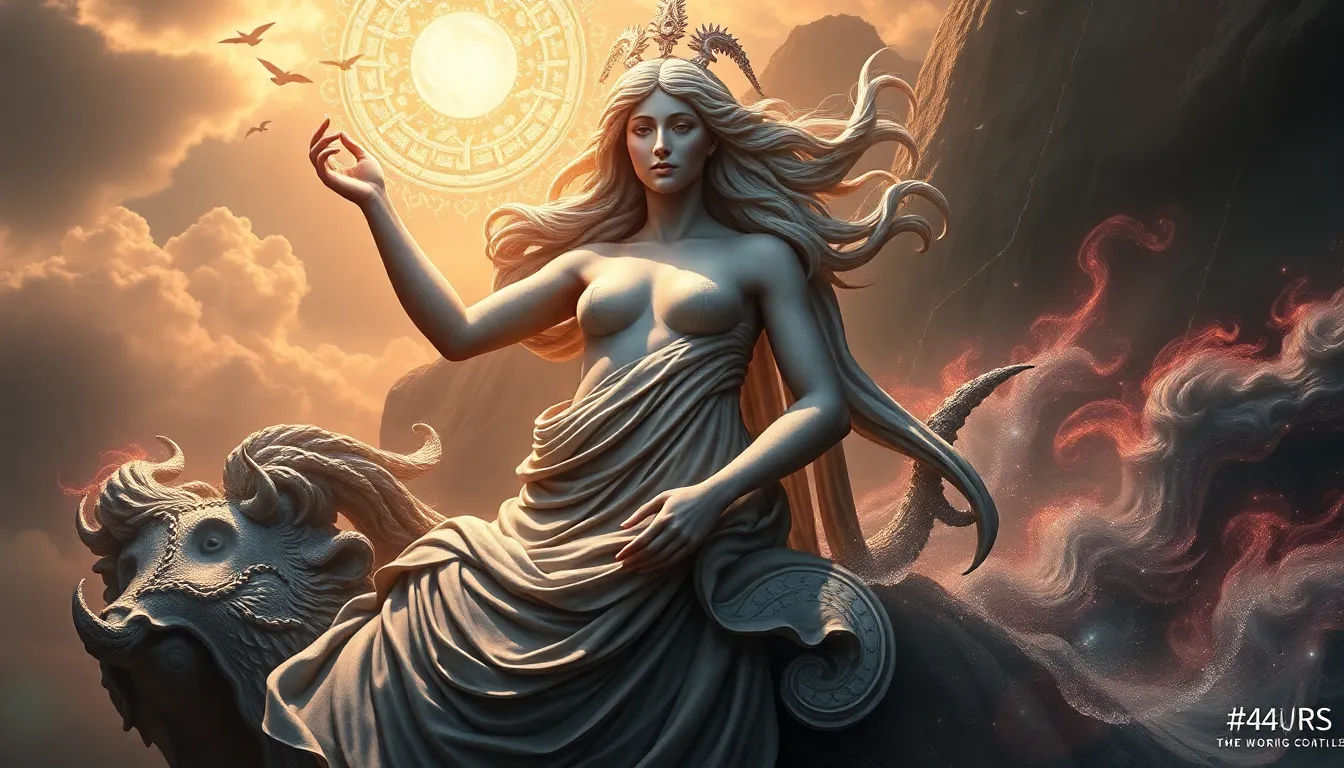The Feminine Divine: Gaia as a Symbol of Motherhood in Myth
I. Introduction to the Feminine Divine
The Feminine Divine encompasses the myriad representations of femininity within spiritual and mythological frameworks. It embodies the qualities traditionally associated with women, such as nurturing, intuition, and creativity, often presented through goddesses and archetypal figures. Understanding these feminine archetypes is crucial for exploring the cultural narratives that shape our perceptions of womanhood and motherhood.
Mythology serves as a vital lens through which we can examine these archetypes, revealing the roles women have played across various cultures and time periods. One of the most significant figures in Greek mythology that embodies these themes is Gaia, the primordial goddess of the Earth. Gaia is not only a representation of motherhood but also a symbol of fertility and the nurturing aspects of nature.
II. The Mythological Origins of Gaia
Gaia’s origins are deeply rooted in ancient Greek mythology. She is often considered one of the first deities, born from Chaos, the primordial void. In the Theogony, a foundational text by Hesiod, Gaia emerges as the mother of all creation, birthing the sky (Uranus), the mountains, and the sea (Pontus).
As the Earth Mother, Gaia plays a crucial role in the creation myth and is revered as the source of life. Her offspring include not only the Titans but also various creatures and gods, highlighting her role as a nurturing figure in the mythological landscape. Key myths involving Gaia include:
- The birth of Uranus, whom she later married.
- The rebellion against Uranus by her children, the Titans, showcasing her influence on their actions.
- Her role in the birth of the Giants, who would challenge the Olympian gods.
III. Gaia’s Symbolism in Nature and Nurturing
Gaia is often viewed as a powerful symbol of fertility and abundance. Her connection to nature is profound, as she embodies the Earth itself, providing sustenance and life to all beings. This nurturing aspect is reflected in various natural cycles, including:
- The changing seasons, representing rebirth and renewal.
- The cycles of planting and harvest, emphasizing her role in agriculture and sustenance.
- The rhythms of life, death, and regeneration, illustrating the interconnectedness of all forms of life.
Gaia’s influence extends beyond Greek mythology; her archetype appears in various cultures worldwide. For instance, in Hinduism, the Earth is personified as Bhumi Devi, while in indigenous cultures, the Earth is often regarded as a nurturing mother. These interpretations highlight the universal recognition of the Earth as a life-giving force.
IV. Gaia in Relation to Other Mother Goddesses
When comparing Gaia to other mother figures in mythology, several similarities and differences emerge. For example, Demeter, the goddess of agriculture, also embodies nurturing and motherhood, particularly in her relationship with her daughter Persephone.
Key shared themes among mother goddesses include:
- Nurturing and sustenance of life.
- Protection of children and the community.
- Embodiment of fertility and growth.
However, differences in portrayal highlight the unique significance of each figure. For example, while Gaia represents the Earth as a whole, Demeter’s focus is largely agricultural. Similarly, Isis, the Egyptian goddess, is often associated with motherhood and healing, emphasizing her protective nature over family.
V. Gaia and the Concept of Balance
Gaia’s mythology encompasses a duality of creation and destruction that reflects the balance inherent in nature. While she is the giver of life, she is also associated with the chaotic forces that can lead to destruction. This duality is evident in her offspring, the Titans, who represent both creativity and potential chaos.
Gaia’s role in maintaining ecological balance is increasingly relevant in contemporary discussions about environmentalism. As the Earth experiences significant ecological challenges, Gaia’s lessons about interconnectedness and the importance of nurturing the planet become more vital. Key lessons from Gaia include:
- The importance of respecting nature and its cycles.
- Understanding the consequences of human actions on the environment.
- Embracing sustainable practices to promote ecological health.
VI. Modern Interpretations of Gaia in Feminine Spirituality
In recent years, Gaia has experienced a resurgence in contemporary feminist movements. She is often depicted as a symbol of empowerment, representing the strength and resilience of women as caretakers of the Earth. In this context, Gaia embodies the feminine qualities of intuition, connection, and nurturing.
The concept of Gaia has also been embraced by ecofeminists who advocate for the interconnectedness of women’s rights and environmental issues. They view Gaia as a powerful symbol of healing, urging society to recognize the value of both feminine wisdom and ecological sustainability.
VII. Artistic Representations of Gaia and Motherhood
Gaia’s image has inspired countless artistic interpretations throughout history, from ancient pottery to modern literature and visual arts. Artists often depict her as a nurturing figure, symbolizing the Earth’s bounty and the essence of motherhood.
These representations reflect societal views on motherhood, emphasizing themes such as:
- The nurturing aspect of women as life-givers.
- The connection between women and nature.
- The reverence for the Earth as a mother figure.
Modern artistic movements continue to draw inspiration from Gaia, often exploring themes of environmentalism and femininity in innovative ways. Her legacy remains a potent source of creativity and inspiration in contemporary culture.
VIII. Conclusion: The Continuing Legacy of Gaia
Gaia’s significance in the context of motherhood and femininity is profound and enduring. As a symbol of the Feminine Divine, she embodies the nurturing, protective, and life-giving aspects of nature. Her legacy encourages us to celebrate feminine archetypes and recognize their importance in our lives.
Preserving and celebrating these feminine divine archetypes, such as Gaia, is crucial in fostering a more balanced and harmonious society. As we embrace Gaia’s lessons on interconnectedness and nurturing care, we can work towards a future that honors both the Earth and the feminine spirit.
Ultimately, Gaia calls us to action, urging us to protect our planet and embrace the nurturing qualities that reside within us all.




